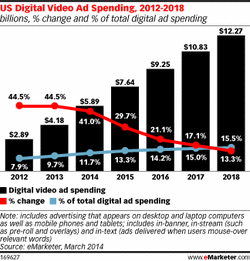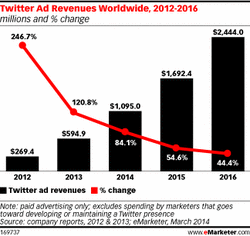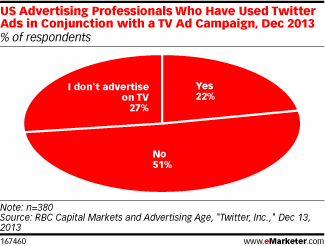
Digital video advertising will make up nearly 12% of all digital ad spending in the US this year and is projected to grow significantly faster than search or overall display advertising for the next several years, according to a new eMarketer report, “50 Best Practices for Digital Video: Do’s and Don’ts for More Effective Advertising.”
Even though digital video advertising is in some ways well established, it is still new to many marketers and is still evolving for the experienced ones.
For this report, designed primarily for ad buyers, whether agencies or brands, eMarketer gathered insights from dozens of experts in the space—executives at brands and ad agencies, publishers, ad networks, and technology support companies. Here are the tips and suggestions from these thought leaders on integrating video ads with TV, one section of digital video advertising we focused on:
Use video to reinforce the larger TV campaign. “We know that when we’re out with a digital video buy, there’s greater recall when our [TV] spot actually airs.” (Amy Peet, Chrysler Group)
Use TV for reach and digital video for frequency. “As a cross-media planner, if you’re able to sequence these two things together, you can have them both working in unison—one for reach, one for frequency. TV advertising typically raises the profile and creates a lot of impact. Then it’s supplemented by high frequency, much cheaper inventory bought through video networks, for example, or any programmatic video buy.” (Matthew Waghorn, Huge)
Don’t expect a panacea—it doesn’t exist. There’s no simple or single formula for budgeting sight-sound-motion ads across TV and digital. “It’s going to depend by brand, by objective of what you’re trying to accomplish, by results over time and refining and tweaking those.” (Doug Knopper, FreeWheel)
Come together. Best practices are established by corporate silos—or the absence of them. “The next step will be around organizational structure. We hear a lot from agencies that the digital and linear sides are slowly coming together, and the same thing is happening with publishers. And the more these discussions happen and these groups come together, the easier it will be for the industry to start transacting on more of a converged space. So another best practice is to really think about how you merge those two sides of the house.” (Brian Dutt, FreeWheel)


 RSS Feed
RSS Feed